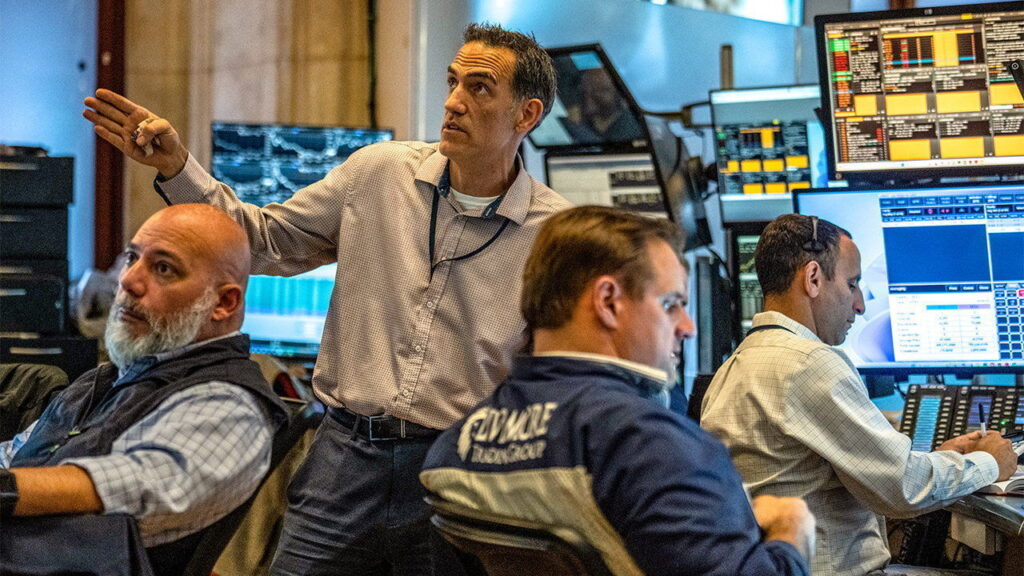The sudden shift in market sentiment has caught many investors off guard, as just a few weeks ago, optimism was widespread and investors were riding high on the wave of record-breaking stock prices. Now, however, fear and uncertainty have taken hold, leading to a rapid decline in stock prices across various markets.
The Nasdaq 100 index, which includes many of the tech giants that fueled the recent bull run, has seen a significant drop of over 10% since reaching its peak in mid-July. This sharp decline has sent shockwaves through the market, with investors scrambling to protect their portfolios from further losses. Japan’s Topix index has fared even worse, suffering a double-digit drop and recording its worst day since 2016 on August 2nd.
While other markets have not experienced the same level of devastation, there is a sense of panic that is spreading rapidly. The VIX index, known as Wall Street’s “fear gauge,” has surged to its highest level since the regional-banking crisis of last year. This increase in volatility has only added to the sense of unease among investors, who are now bracing themselves for further turbulence in the coming days.
The current market turmoil has raised concerns about the sustainability of the recent bull market, with many questioning whether the recent gains were justified or simply the result of speculative frenzy. Some analysts point to a number of geopolitical factors, including trade tensions between the US and China, as well as political instability in various regions, as contributing to the current market volatility.
In addition to external factors, there are also concerns about the health of the global economy, with some warning of a potential recession on the horizon. The recent inversion of the yield curve, a predictor of economic downturns, has only added to these fears, leading to a further sell-off in equities.
Investors are now grappling with the decision of whether to stay the course and ride out the storm or cut their losses and sell off their positions. Many are turning to safe-haven assets such as gold and government bonds in an effort to protect their wealth from further market turmoil.
In times of uncertainty, it is important for investors to remain calm and level-headed, avoiding knee-jerk reactions that could lead to further losses. By staying informed and diversifying their portfolios, investors can better weather the storm and position themselves for long-term success in the markets.
As the market continues to fluctuate and uncertainty looms, it is unclear how long the current downturn will last or what the ultimate impact will be. However, one thing is certain – the recent euphoria that characterized the bull market has quickly given way to fear and trepidation as investors brace themselves for what lies ahead.



